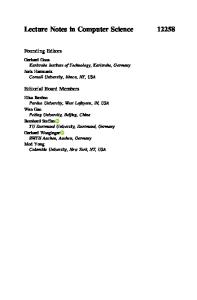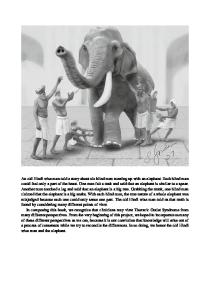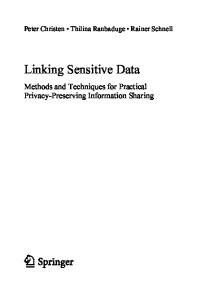Directions in High Temperature Intermetallics Research
- PDF / 1,434,759 Bytes
- 11 Pages / 420.48 x 639 pts Page_size
- 73 Downloads / 955 Views
DIRECTIONS IN HIGH TEMPERATURE INTERMETALLICS RESEARCH DENNIS M. DIMIDUK and DANIEL B. MIRACLE AFWAL Materials Laboratory, Wright-Patterson AFB, OH 45433-6533 ABSTRACT Structural intermetallic materials have undergone an evolutionary process whereby some of the materials could provide major payoffs in gas turbine engines. This maturation of select intermetallic systems has provided significant hope for making still greater advances in turbine performance through further developments in other intermetallic materials. The same maturation process has highlighted specific limitations and requirements which are key to the utilization of intermetallic systems. This paper briefly reviews some critical ground rules for high temperature intermetallics development and identifies research directions being pursued by the Air Force for advancing intermetallic materials. INTRODUCTION A major priority of both the Air Force Project Forecast II High Temperature Materials study and the DoD Integrated High Performance Turbine Engine Technology initiative (IHPTET), is the continuing search for lightweight durable materials which retain their strength and stiffness at very high temperatures. Toward this end, the high temperature metals activity at the AFWAL Materials Laboratory has focused on the exploration of metallic and intermetallic materials (including composite systems) which may be suitable as structural systems for service in turbine engines and hypersonic vehicles at temperatures from 1000 0C to 1600cC. By the revolutionary nature of this requirement, that is, by the fact that no such materials exist today, the exploration of materials for these extreme environments requires the building of a foundation in the sciences of material synthesis and mechanical behavior mechanisms. This foundation will be the basis for forming the necessary intuition for creative engineering development and ultimate use of these materials by the aerospace community. Of extreme importance in establishing the science base is the differentiation, in every compound base studied, between the general microstructure property relationships that may exist and be "transferable" to other systems, and those relationships which are unique or peculiar to the system selected. In this paper, we wish to offer a perspective on research directed toward future intermetallic materials for service above 1000'C. This particular perspective is from the point of view of those who are not only participating in this research, but are also trying to motivate research and further advances in these systems. Clearly, the challenges, such as the requirements of hypersonic flight, are some for which solutions have long been sought, and probably will continue to be sought for many years to come. While we do not propose that intermetallics are a panacea for meeting such requirements, the advances of the last fifteen years have motivated the Air Force to seek windows of opportunity for these compounds with greater diligence. Two years ago at this symposium, several survey views of th
Data Loading...











